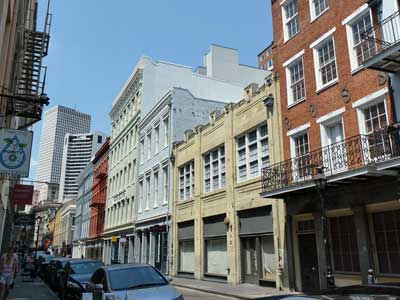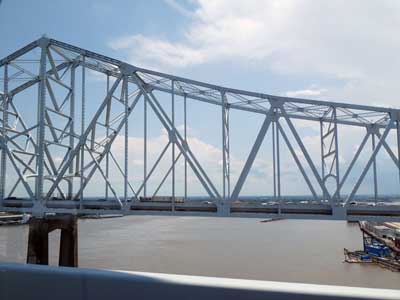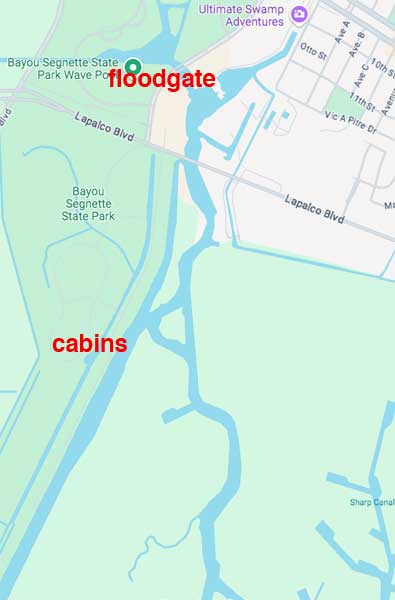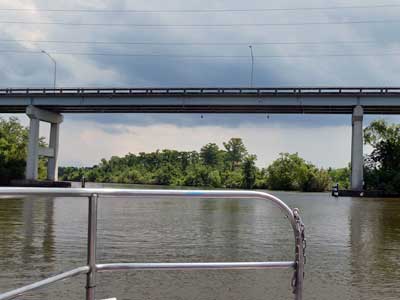BAYOU (Day 3 - part 2)
Continuing through town...


(right) We learned about this too: A gallery is a balcony supported by posts.








This building houses the Louisiana Supreme Court which functioned out of a variety of structures until this one was completed in 1909. Considered one of the finest courthouses in the nation upon its completion, inadequate funding for maintenance led to the building’s long decline. By 1982, all offices had vacated. During the 1980s, the possibility of renovating the building was discussed, and in 2004 restoration work was completed. ... The pelican, with her young ripping out her feathers.


At 12:45 we were picked up at our hotel for a 1 hr 45 minute airboat adventure with Bayou Swamp Tours. Hillary, our shuttle driver, had an extremely funny sense of humor and told us some city history as we drove.




He pointed out how serious the city was about its no parking zones!


The cityscape ... Opened in 1958, the Crescent City Connection (formerly the Greater New Orleans Bridge) is a pair of cantilever bridges that cross the Mississippi River.

The Harvey canal (originally the Destrehan Canal) was dug before 1845. It connects the Mississippi River to Bayou Barataria.
We arrived at Bayou Segnette just outside of Westwego.


A bayou is an extremely slow-moving stream or river with a poorly defined shoreline in a flat terrain. They are often confused with swamps. A swamp is a large, forested wetland with deep, still-standing water. Bayous are typically wide, shallow and constantly flowing. A bayou, however, can flow through a swamp. Both are overgrown with vegetation and have similar wildlife. Bayous can contain fresh, salt or brackish water. They serve the important role of carrying sediment through the wetlands to rebuild the coastlines.
Historians believe the word originates from the Choctaw (the native tribe who used to inhabit the Louisiana and Mississippi area) word for small stream, or bayuk.






All set!



Heading out .... A shrimp boat




The Bayou Segnette Sector Gate is a floodgate that's part of the hurricane levee system.


The water here was only 6 feet high during Katrina (2005) but 15 feet high with Irma (2017).


A Great Blue Heron


Yellow-crowned Night Heron. The nictitating membrane is a third eyelid that moves across the eye from front to back, protecting it especially during flight. Birds primarily use this membrane to blink, rather than their upper or lower eyelids.


A double-crested cormorant




The flat-bottom airboat is used in marshy and/or shallow areas where a standard motor with a submerged propeller would be impossible. It glides along the surface of the water and is pushed forward by a column of air generated by a large propeller powered by a car or jet engine. Rudders attached to a control stick divert the air to steer. The driver typically sits in an elevated position to maximize visibility. They can't drive in reverse. The airboat was invented in 1905 by Alexander Graham Bell and became popular in the US in the 1930s.


Passing under Lapalco Blvd


The black vulture has a wingspan of almost 5 feet, which is relatively small for a vulture. For some reason, they really seem to like sitting on the powerlines.
return • continue

